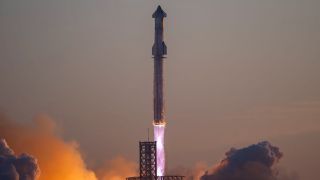HIT ALL RUSSIAN ASSETS CLOSE TO FLORIDA COAST BEFORE THEY ESTABLISH A PERMANENT CUBAN BASE: THIS IS THE TIME TO DESTROY THE RUSSIAN FLEET WITHOUT AIR PROTECTION. DAMAGE REPAIR SUPPORT DOES NOT EXIST THEREFORE SHIPS IN NEED WILL BE STRANDED. NO MATTER WHAT RUSSIA IS ALREADY PREPARING AN ALL OUT WAR.
“The Russians have been more active than we’ve seen them in years,” Army Gen. Chris Cavoli, the top commander for NATO and U.S. military operations in Europe, told Congress on Wednesday of Moscow’s undersea capabilities. Russia’s nuclear-powered submarine is now deployed in American waters. The Kazan 561 or K-561 is an advanced Russian Yasen Class nuclear-powered cruise missile submarines. Operated only by Russia, Yasen class submarines are the newest subs in the Russian navy and are known for their sophisticated design, armament, and stealth capabilities. Is its deployment bringing US and Russia to the brink of war.
Cavoli’s assessment represents a grave warning for future threats Russia may pose to the U.S. and Ukraine’s other western backers. Though analysts have expressed concerns about Russia’s submarine forces in recent weeks, they have largely centered on the recent attention the Kremlin has focused on its Pacific Fleet, which conducted massive drills last week and which Moscow analyzed and claimed last week has “high readiness.” Those maneuvers were seen in part as an acknowledgement of Moscow and Beijing’s increased partnership.
Putin previously raised concerns in the West in January when he dispatched surface warships to the Atlantic Ocean, including those the U.S. believes can fire hypersonic weapons potentially capable of defeating American missile defenses. Russia fields 11 ballistic missile submarines, which analysts previously assessed it deploys largely off its Arctic coasts.
Cavoli’s comments come at a time of growing consensus that Russia has severely harmed several key elements of its military power through President Vladimir Putin’s decision to invade Ukraine in February 2022 without provocation. A string of high-profile and embarrassing failures since then have exposed endemic issues within the Russian Ministry of Defense, particularly deeply rooted corruption among top commanders, logisticians and those overseeing stockpiles. And confusion and mismanagement on the battlefield has created a veritable meat grinder for Russian ground forces, despite Putin’s decision to continue pressing young men into service and sending them into the fight.
Russia continues to benefit from the sheer size of its forces, as seen in the persistent, grinding combat around cities such as Bakhmut in Ukraine’s east. But analysts have increasingly highlighted the core problems that plague its ground troops.
“Russian forces in Ukraine are operating in decentralized and largely degraded formations throughout the theater, and the current pattern of deployment suggests that most available units are already online and engaged in either offensive or defensive operations,” the independent Institute for the Study of War, which has fastidiously tracked Russian military movements in and around Ukraine, concluded in an analysis note on Sunday.
“It is highly likely that the majority of Russian elements throughout Ukraine are substantially below full strength due to losses taken during previous phases of the war,” the institute stated.
The grave warnings also come as a growing number of Republican lawmakers – and several leading GOP presidential candidates – question the value of U.S. support for Ukraine, saying those resources should instead focus on deterring China.
Rep. Mike Waltz of Florida, a former Green Beret commander, employed this argument on Wednesday, questioning Assistant Secretary of Defense for International Security Affairs Celeste Wallander, who testified alongside Cavoli, about the need to continue dedicating resources to Ukraine when Russia’s military has been devastated.
“We should not make the mistake of underestimating Russia’s military capabilities,” Wallander warned, “because the stakes of getting it wrong are too high.”
Florida Governor Ron DeSantis on Friday spoke out for the first time about Russian warships in Cuban waters, criticizing the Biden administration for espousing "weakness" on the global stage.
Footage released by the Russian Defense Ministry on Thursday showed the frigate Admiral Gorshkov and nuclear-powered submarine Kazan sailing into Havana Bay, about 100 miles south of Florida. They were not carrying nuclear weapons but were armed with Zircon hypersonic missiles and Kalibr cruise missiles.
The Cuban Foreign Ministry described the Russian naval presence as a reflection of the country's "historically friendly relations" with Moscow, even greeting the ships with a 21-cannon salute. Moscow has defended its four-ship fleet presence as part of routine military drills conducted with allies.
"I'm the governor of Florida, I'm not the commander-in-chief, but if my responsibilities were different, that would not be something that we would allow to be happening," DeSantis said Friday in Hollywood, Florida, according to footage recorded by Florida's Voice. "I think it's really concerning that under this administration, they've put out a posture of weakness that has invited more aggressive actions from our adversaries."

 The Starship upper-stage prototype Ship 28 conducts a six-engine static fire test on Dec. 20, 2023. (Image credit: SpaceX)
The Starship upper-stage prototype Ship 28 conducts a six-engine static fire test on Dec. 20, 2023. (Image credit: SpaceX)